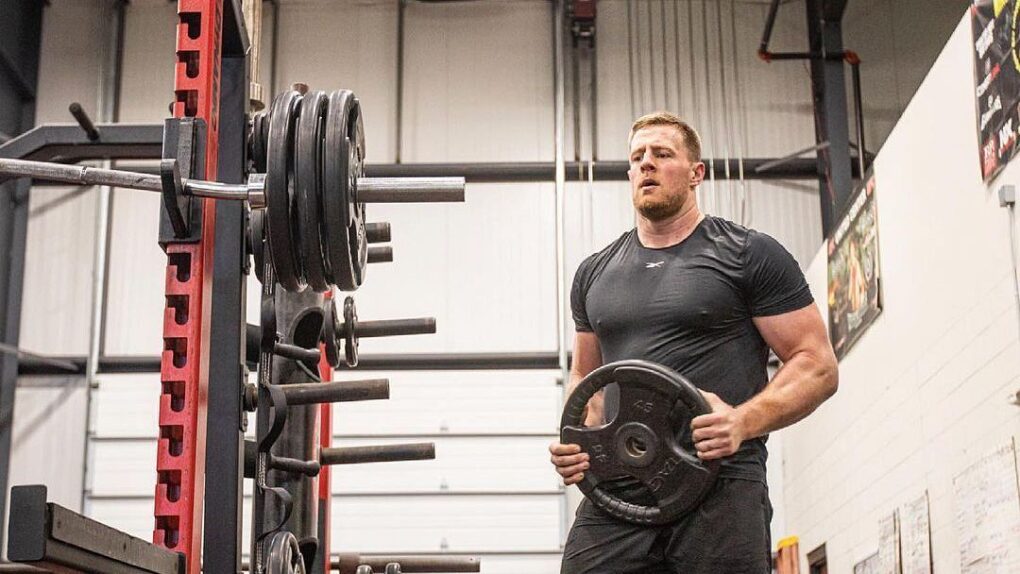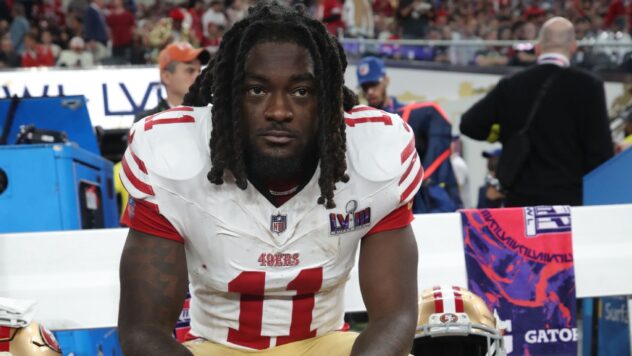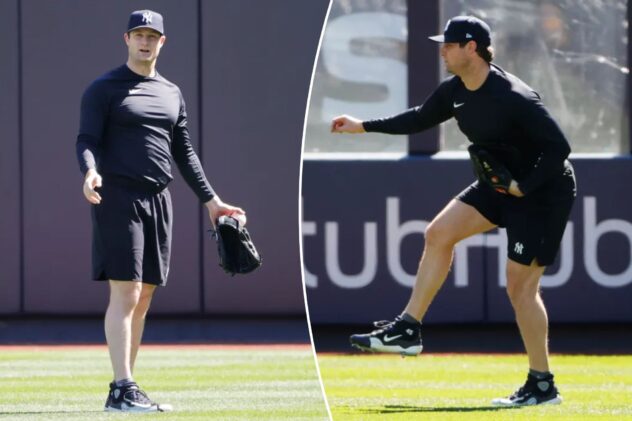Arizona Cardinals’ J.J. Watt done ‘tiptoeing’ around his training

TEMPE, Ariz. — Brad Arnett sat outside the football fields at Arrowhead High School in Hartland, Wisconsin, last fall, waiting for school to finish and practice to start, when a text message showed up.
It was J.J. Watt.
That, in itself, wasn’t a surprise. Arnett, a defensive line coach at Arrowhead, started training Watt as a 15-year-old, and even though the two had stopped working together for a full offseason, they still talked a lot, usually over text.
This text, though, was different. It was long; Arnett joked that it was like 16 pages long. In it, Watt said he was pushing the Houston Texans‘ training staff to let him get back to some of the exercises he preferred — ones that made Watt feel like himself. It wasn’t an airing of grievances, Arnett remembered, as much as it was a former NFL Defensive Player of the Year wanting to rekindle what he once had. Watt needed Arnett to help him do that.
Before they started training together this offseason, Arnett was blunt with the 32-year-old Watt: There are things in the weight room Watt can’t do anymore. The risk was too great for the reward, especially after having gone through rehab for a back injury, a broken leg and a torn pectoral muscle in the past five years. But there were things they could change.
And Arnett assured Watt they could get back to doing some what they used to do — the types of workouts and exercises that make Watt feel normal, that make him tick, including Olympic-style lifts and back squatting.
“That’s kind of what we spent the entire offseason doing,” Arnett said, “was getting him back to a lot of the things we were doing when he was winning Defensive Player of the Year awards.”
Watt walked into Arnett’s gym, NX Level Sports Performance, in Waukesha, Wisconsin, Watt’s hometown, in early February to get to work.
“I have been doing everything exactly the way the doctors want you to do it because I’ve had the injuries, obviously,” Watt told ESPN in early September. “Everybody’s super conservative, so you got to protect this, you gotta protect that, you can’t do this stuff, you can’t do that lift, you can’t run too hard, you can’t run not enough.
“Listen, I’m not going to go into [this] season just tiptoeing in, trying not to get hurt, because even if I don’t get hurt, I’m not going to be the player I want to be. So, [we decided] we’re going to train this offseason like we used to, we’re going to train like the old days and we’re gonna train our asses off — and I’m going to go into that season gangbusters.”
On Sunday, in his first game with his new team — the Arizona Cardinals — Watt played 46 defensive snaps and one offensive snap as a fullback on a Kyler Murray touchdown run. Watt had two tackles, one for a loss, and a quarterback hit. What didn’t show up in the stats was Watt’s ability to get into the backfield often against the Tennessee Titans. He was a constant presence against running back Derrick Henry, who finished with 58 yards on 17 carries. Watt also contributed to Chandler Jones‘ career-high five sacks, some of which were undoubtedly caused by being single-teamed while Watt drew attention on the other side of the line.
The training seems to have paid off.
“You have to have somebody in your corner to also push you when you’re a little scared yourself,” Watt said. “… That’s why I trust Brad so much.”
Putting on weight
Arnett, who was once a strength and conditioning coach at the University of Minnesota and the University of Arizona, trained Watt when he earned two college scholarships, to Central Michigan and Wisconsin. Arnett helped Watt become an All-American in 2010 and a first-round draft pick in 2011 and to win three NFL Defensive Player of the Year awards. Watt also was a five-time first-team All-Pro and a five-time Pro Bowler during those years. He was looking for the same training that got him to those peaks.
When Watt returned to Arnett’s gym, their first hug was a bit awkward.
It was like the scene from the movie “Step Brothers,” Arnett said. They were still getting used to each other after a few years apart.
The hesitancy didn’t last long, though. Watt and Arnett were quickly back into their routine. They started working five days a week, with Watt’s brothers, T.J. and Derek, of the Pittsburgh Steelers, training alongside him. The trio pushed each other daily, and J.J. Watt and Arnett said they bickered like brothers do, especially after rounds of golf. It was like nothing changed.
Arnett began reorienting Watt to some of the work they used to do together, such as muscle activation that Watt hadn’t done in a while. Watt’s workouts shortened as Arnett began focusing on specific muscles or areas. Eventually, they went down to four days a week, working out for between an hour and 45 minutes to 2½ hours, most of which was warm-up activation and cool down. Arnett estimated that Watt lifted for about an hour and 15 minutes a day.
They went from early February to the Friday before training camp. Arnett structured Watt’s workouts differently than in years past because this was the longest he had with Watt consistently during an offseason.
Arnett’s goals for Watt this offseason centered around putting on more weight. Watt reported to training camp last year at around 280 pounds, with less than 10% body fat, Arnett said. That, he added, was too low.
“Dude, you’re not going into a photo shoot here,” Arnett remembered telling Watt. “You’re going into play a physical game here.”
Arnett wanted Watt to understand he could feel as good and move as well as he did in 2020 with more weight on him. Arnett also wanted to reestablish some of Watt’s strength “in the right ways.”
All of that, Arnett believed, would help lead to more mental confidence for Watt, who reported to the Cardinals’ training camp at around 296 pounds.
MVP mentality
The six months that Watt spent with Arnett was about more than just preparing his body. It helped get his mind right.
They worked through the mental roadblock Watt had in regard to squatting. He hurt his back in 2016 on a Keiser air compression squatting machine, so there was, naturally, an internal resistance to squatting. At one point this offseason, Watt was using the machine with bands, but Arnett could tell by the look on Watt’s face that something wasn’t right. They talked through it and replaced the band with chains. Different application. Same concept. Same result. Watt powered through the squats.
“Anytime you overcome a fear, you become stronger because of it,” Watt said. “I think that’s what it did for me, is I got stronger and I taught myself, ‘OK, you are OK in that position, so now you can build on it, you can continue to grow.’ And then after a while, it’s no longer in your head at all.”
Between his back injury, broken leg and torn pec over the past handful of years, Watt knew he had to work his way back.
“You have to be smarter about how you build back up to that,” he said. “And I think the one thing that I did this year was, I was kind of past all of that, so I have been able to lift much heavier than I have in last few years, and I’ve been able to run harder and do some of the stuff.
“So, it’s been very good, and I feel very good.”
Arnett described Watt in the weight in four words: “The guy’s a freak.”
While a lot of Watt’s gift is his genetics, Arnett pointed out, Watt also approaches his training unlike most.
“He understands the things that most people deem mundane, he makes the constant; and it’s served him extremely well,” Arnett said. “And he’s consistent, so, he’s like the ‘Rain Man.’ I mean, he gets into a routine, and he’s just very, very consistent in everything that he does. There’s no up; there’s no down.”
Arnett got Watt back to doing clean and snatches, back squatting and variations of single-leg work. The result? Watt was putting up numbers in the vertical jump, broad jump, sprint work and some lifts that were similar to what he was doing when he won Defensive Player of the Year in 2012, 2014 and 2015.
Watt was usually within about 40 pounds of the weight he was putting up during his player of the year seasons, Arnett said, all at age 32.
Getting older has given Watt not just more experience but an important perspective on how to approach his training. Reaching the numbers from earlier in his career wasn’t important this offseason. He lifted smarter.
“The marginal gains that you’re getting aren’t worth the risks that you’re taking to get those gains,” Watt said. “So, I feel very good with where we’re at.”
Arnett sent Watt comparisons to numbers he tracked over the years or videos from years ago. It wasn’t to compare and contrast how Watt was doing after injuries and time took a toll on his body. It was to show him, “Dude, you’re right there.”
“He’s 100 percent at where he should be,” Arnett said.
“You’re going to see him doing things on the field from a reactionary standpoint, moving people, pursuit angles, just things that he was always known for. I think you’re going to see him doing those things again that you haven’t seen out of him in three, four years.”
















